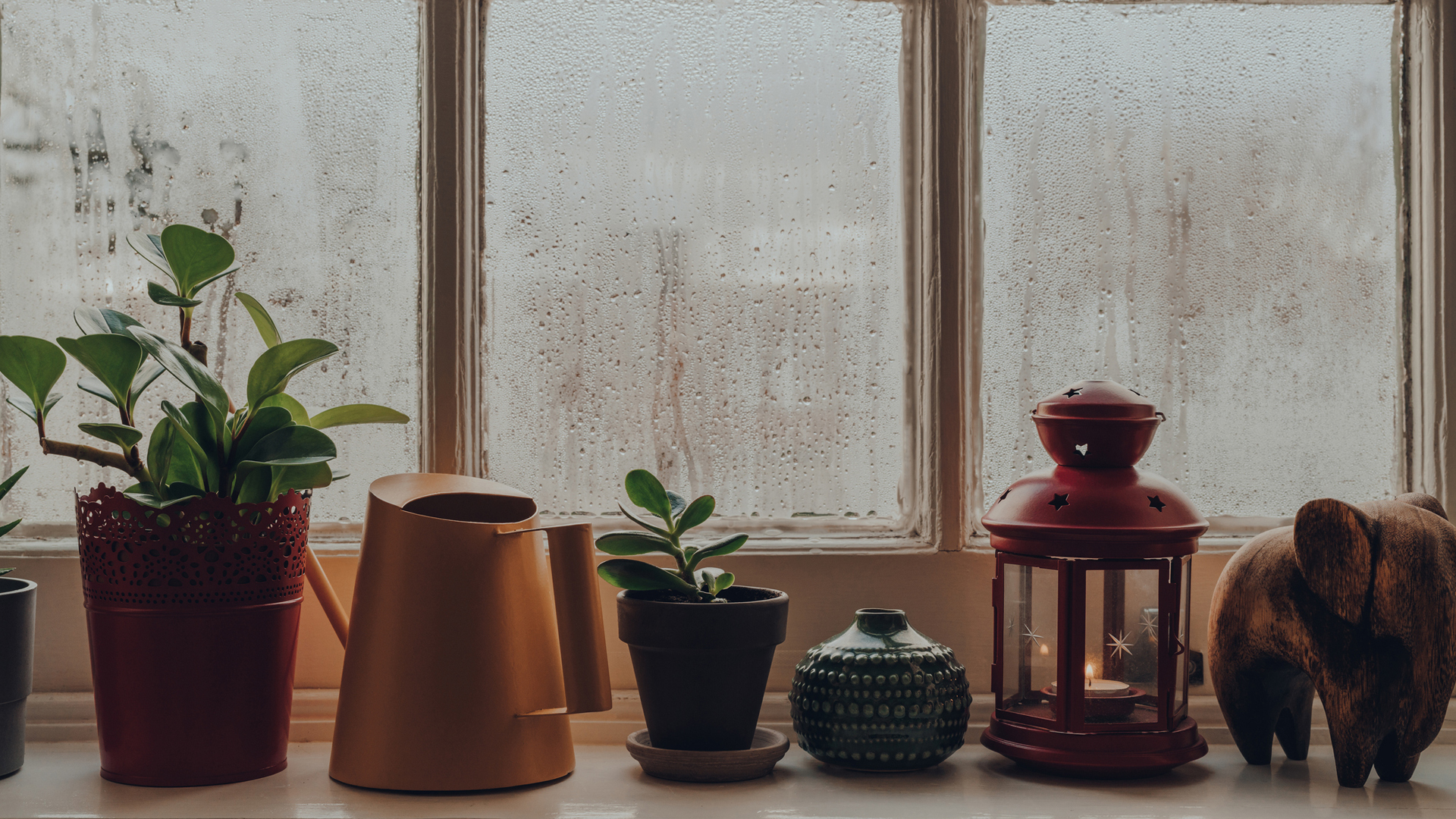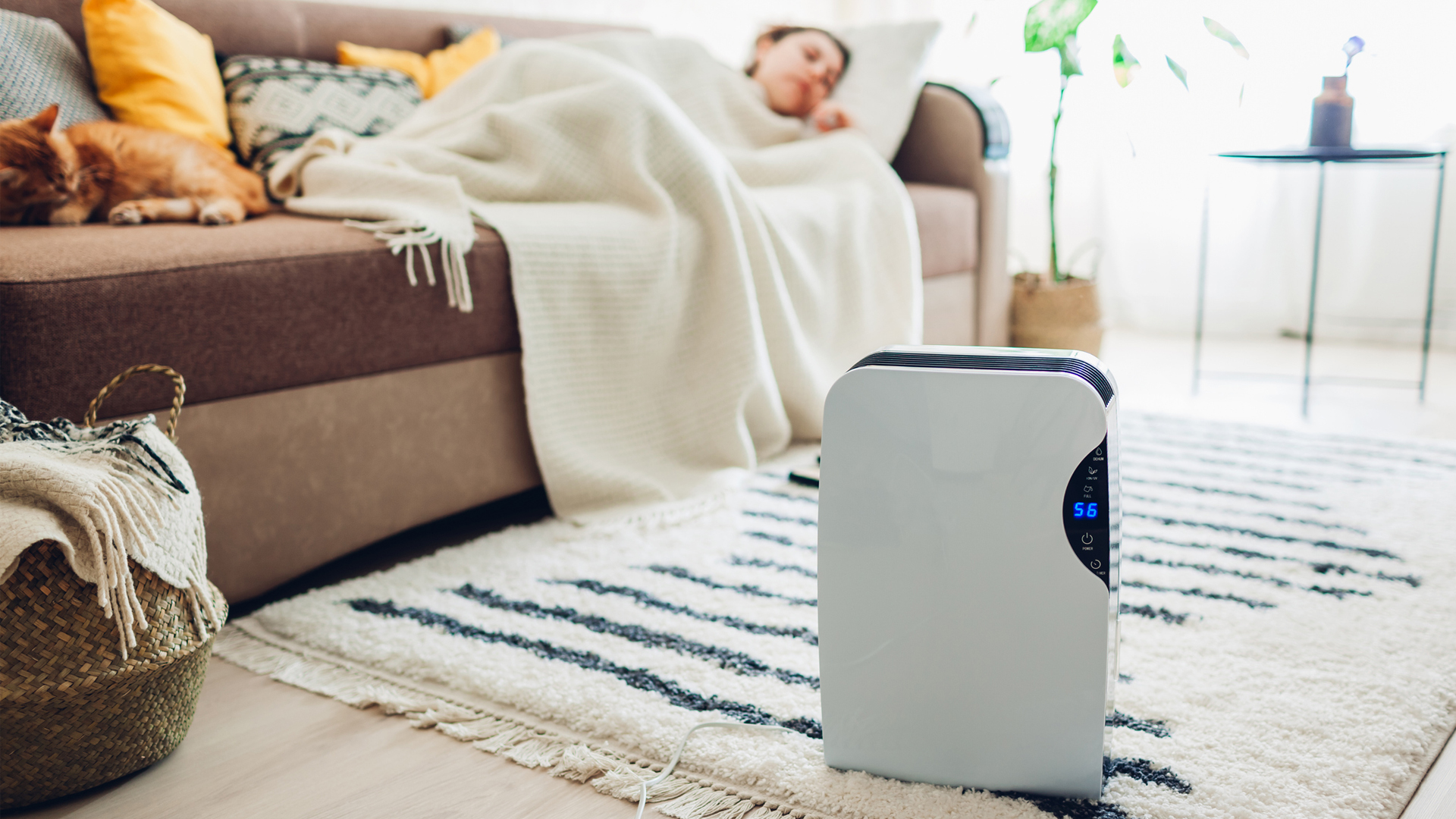What humidity is comfortable?
We all have our preferences, but what humidity is comfortable? We asked the experts

Wondering what humidity is comfortable? While we often give a great deal of thought to heating our homes in the winter and cooling them down in the summer, we may not realize just how crucial controlling the humidity and temperature is when it comes to living comfortably.
In fact, according to research published in the International Journal of Hygiene and Environmental Health, low and high relative humidity (RH) levels can cause sensory irritation symptoms in the eyes and airways, affect your work performance, sleep quality, impact a virus’ chance of survival and promote the growth of mold and dust mites. All of these factors can have a negative impact on indoor air quality and in turn, your health.
Air quality is something we think about when it comes to the outside environment. So why should it be any different at home? We know that the best dehumidifiers and the best humidifiers can help to remedy these situations, but can optimizing the humidity levels in your home stop these problems from occurring in the first place?
To help get to the bottom of this issue, we spoke to experts from the Centers for Disease Control and Prevention (CDC) and the U.S. Environmental Protection Agency (EPA) to find out what the current recommendations are.
How can you measure the humidity level in your home?
If you’ve been searching for the answer to this question, you may have come across the two terms: relative humidity and absolute humidity. Relative humidity measures the density of water vapor in a space relative to the temperature in the same space.
Scientists in the Journal of Applied Meteorology and Climatology describe this process as the ‘degree of saturation of the air’ with water. So, if there’s 100% humidity, the air can’t hold any more moisture.
While absolute humidity is a measurement of the amount of water vapor present in the air at any one time.
Get the world’s most fascinating discoveries delivered straight to your inbox.
But don’t worry — to measure the humidity levels in your home, you don’t need to do any calculations. Instead, you can use a handy humidity-measuring machine, called a hygrometer, that does it all for you.
According to a CDC spokesperson: “Residents can use a device called a hygrometer to measure relative humidity in the home. The cost of a hygrometer starts at $10, and these devices can be purchased at hardware stores, general merchandise or discount stores, or online.”

What humidity is comfortable?
The American National Standards Institute recommends maintaining a relative humidity level of between 30% and 60% in habitable spaces. And it’s for good reason. As research shows, high levels of indoor air humidity (IAH) promote the growth of mold, dust mites, and mildew on building surfaces. While low levels of IAH can bring about dryness of skin, mouth and throat, and also induce mucous membrane, sensory irritation of eyes, bronchitis, asthma, influenza and static electricity.
As scientists published in the Procedia Engineering journal conclude: “Controlling IAH levels correctly in buildings is a key component of indoor environmental conditions. Relative humidity (RH) in habitable spaces should be maintained between 30% and 60%.”
What can you do if humidity levels are too high?
There are a range of changes you can make in your home or office if humidity levels are too high. The EPA suggests the routine use of exhaust fans in bathrooms and kitchens, along with:
- Using air conditioners and/or dehumidifiers when needed
- Running the bathroom fan or open the window when showering
- Using exhaust fans or open windows whenever cooking or dishwashing
- Venting appliances that produce moisture, such as clothes dryers, stoves, and kerosene heaters to the outside where possible

An EPA spokesperson added: “Combustion appliances such as stoves and kerosene heaters produce water vapor and will increase the humidity unless vented to the outside.”
Unfortunately, high humidity levels can occur any time of year. For example, in tropical areas, humidity is high all year round. While in tightly sealed homes in colder climates, humidity can build up even when the outdoor humidity is low.
What can you do if humidity is too low?
You might find that humidity levels are low in your environment especially if you live in a desert, city or town, as one of the most prevalent causes of low humidity is to do with the temperature outside. However, there are ways in which you can boost the humidity levels in your environment and help keep it between the recommended RH levels of 30-60%.
One way is by drying your clothes indoors or by leaving bowls of water around your space. This comes after one pilot study published in Procedia Engineering, which looked into how you could improve air humidity in heated rooms, found that the natural evaporation of water from a wetted textile fabric could ‘effectively improve indoor IAH’. Researchers said: “Both evaporation rate and evaporation quantity of water from wetted porous fiber fabric had significant influences on attainable maximum value of IAH.”

Another way to do so is by using a humidifier to add moisture back into the air, or, if you happen to love plants, having more of these in your home could also help. Research has proven that house plants, such as spider plants, jade plants or the English ivy, can increase humidity through the important process of evapotranspiration. It’s believed that this process is responsible for 15% of the atmosphere’s water vapor.
Becks is a freelance journalist and writer writing for a range of titles including Stylist, The Independent and LiveScience covering lifestyle topics such as health and fitness, homes and food. She also ghostwrites for a number of Physiotherapists and Osteopaths. When she’s not reading or writing, you’ll find her in the gym, learning new techniques and perfecting her form.



